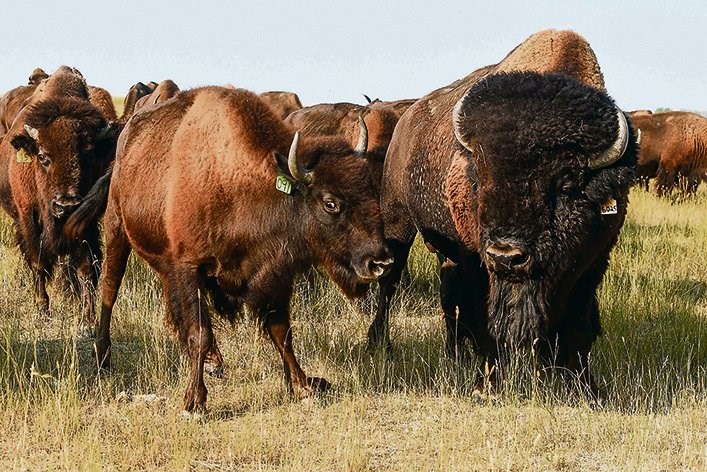WESTERN PRODUCER — Researchers have launched a survey seeking feedback on the potential threats of diseases in Alberta’s Wood bison population being transmitted to cattle.
Both bovine tuberculosis and bovine brucellosis have been endemic within the bison populations in Wood Buffalo National Park since the 1920s. Anthrax within the population also is a concern for researchers.
Project lead David Hall, professor of animal health economics and policy at the University of Calgary, said the initiative is targeting hunters and the public along with cattle and bison producers in efforts to mitigate risks that bovine diseases will spread.
“Parks Canada has been, for quite some time, concerned about how do we manage the species, how do we manage the diseases in bison?” said Hall.
Bovine TB can have devastating effects on individual ranches and impact the multibillion-dollar beef industry, said Hall, which can result in the shuttering of exports if multiple cases are found across different operations.
While Canada enjoys bovine TB and brucellosis free status currently, cases do arise from time to time and are quickly contained.
“But there is this reservoir in bison in Wood Buffalo National Park and the question is do we eliminate the bison? Do we humanely euthanize them all to contain and get rid of the disease in bison,” asked Hall. “That’s a problem because then you are killing a species that is at risk and we’re trying to bio-conserve the species, we’re trying to preserve the gene pool.”
There are also First Nations cultural issues at play for Indigenous peoples who hunt bison for food and for ceremonial purposes within the park.
Hall, who is running the project with post-doctoral researcher Kyle Plotsky, said following a decade of discussions with Parks Canada about the issue, they were able to secure funding to examine the potential economic impacts of diseases spreading beyond the park.
“It’s only now that we’ve started to address that question,” said Hall.
The current understanding of bovine TB is that the threat of spread from bison to cattle is low. The risk rises with the amount of interaction between the two species.
But Hall noted when it comes to the beef industry, “we’re talking about a $2- to $3 billion export value every year to the cattle industry, so why would we risk that?”
While he said he respects that viewpoint, there is a balance required in tackling the issue with the need to maintain biodiversity on the landscape.
“It’s a big deal in terms of dollars and cents,” said Hall.
Plotsky said bovine TB infections in Wood bison go back to the translocation of the Plains species of the animal to a commercial operation in Wainwright, Alta., from a herd from Yellowstone National Park in the early 1900s.
That operation became overpopulated with bison so some were transferred to Wood Buffalo without being fully tested for the disease.
“The diseases have been in the park for close to 100 years now. There have been a couple of different endeavors over the past century to try and deal with it — some implemented, some just proposed,” he said.
Plotsky said research is ongoing to determine why some of the Wood buffalo herds appear genetically predisposed to bovine TB while others are resistant to it.
Regardless of the origins, Hall said the view of many in the cattle industry is, “whatever you are doing, make sure that disease either stays in the park or you get rid of it because any premises that is infected risks the entire industry being shut down from east to west coast.”
Hall stressed that’s why it’s important for cattle producers to take part in the survey.
“Unless they come to the discussion and provide their input, their voice will be overpowered and overshadowed by other representatives that come to the discussion on what should be done with the management of the bison herd,” said Hall.
The survey can be found at and takes about 20 minutes to complete.
Hall and Plotsky said they expect the project will result in a report to Parks Canada by the middle of next year.




